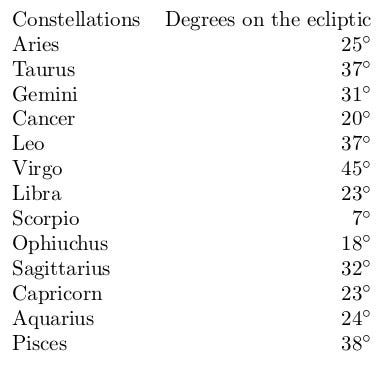The topic of using a tropical or sidereal definition of the zodiac is an important one. Fascinating, confusing, triggering for some people. It can be a complex topic. I have a brief introduction to the basic ideas, but in this article I want to describe the heart of the matter.
The Fundamental Question
Let’s start with something everyone can agree on: the signs of the zodiac denote particular patterns of qualities. In others words, the zodiacal signs are archetypes.
The fundamental question is:
What is the source of these archetypes?
In the popular imagination the source of the archetypes is the constellations that bear the names of the zodiacal signs. If the Sun is in the sign of Virgo at the moment of birth, this means that the stars of the constellation of Virgo have somehow impressed their inherent archetypal power through the Sun onto that person.
There is another possibility:
The archetypes of the signs are derived from the relationship between the Sun and the Earth.
In sidereal astrology, the circle of the zodiac begins at some fixed star. Thus the archetypal power of the sign derives from the stars.
In tropical astrology, the circle of the zodiac begins at the ascending equinox. Thus, the signs derive their archetypal power from the relationship between the Sun and the Earth.
I find idea that the archetypes of the signs derives from the relationship between the Sun and the Earth to be much more logical.
The Source of Archetypes
What really is the source of archetypes, in general? Let us say that it is the human psyche, or, really, the relationship between the human psyche and the world. Archetypes are how we make sense of, how we pattern, our experience.
We certainly have a relationship with stars, and they certainly affect us, but compare the relationship we have to the Sun with the relationship with have with any of the stars. The Sun is much, much more important to human beings than any star.
Also consider that in the sidereal system there is no mention of the Earth. The planets are said to pass through certain constellations, and that determines our existence. Planets and stars, there is no room or role here for our home the Earth.
In the tropical zodiac, the Earth and the Sun, Mother and Father, together form the substrate on which the human psyche knows and describes itself. Every human being is intimately connected to the Earth1 and intimately connected to the Sun. It is completely and utterly logical that this relationship, and our relationship to it, would condition patterns of behavior and experience for everyone on Earth.
The Sun and the Earth are in intimate relationship. We are in intimate relationship with each. There is a higher-order relationship: we are in relationship with the relationship of the Sun and the Earth, and there are relationships between all of these relationships: this is the source of the signs of the zodiac.
Similarly with the planets: a planet in a sign denotes the relationship that planet has to the current state of the relationship of the Sun and the Earth, and all the higher-order relationships to infinity.
Fundamentally, the tropical zodiac is a system of intimate relationships, extending out to the whole solar system, with its center, its foundation being the Earth and its relationship to the Sun.
The Problem with Constellations
I’ve heard that some sidereal astrologers dismiss the tropical zodiac by saying something like “well, just look at the sky”.2 By which they mean, for example, that if we go to tropical 0° Aries and we look at the constellation behind the sun at that point, we will see the constellation of Pisces. That example is certainly true at the moment.
However, these sidereal astrologers use a zodiac of 12 equal signs, i.e., 12 signs of 30° each. With such a zodiac, no matter which ayanamsha you use, there will always be multiple points where, if you “just look at the sky”, you will see that the sign your horoscope says is NOT the sign that you see.
Why?
Because the constellations are not themselves 30° each.
The table below shows how many degrees each constellation takes along the ecliptic3:
As you can see, none of the constellations are 30°. Some of them are giant, like Virgo at 45°. Scorpio is tiny at 7°. If you look closely, you’ll notice that there are actually 13 constellations listed. This is because there is a large space between the constellations Scorpio and Sagittarius. So if we were to use “the actual sky”, if the Moon were in this space it wouldn’t have a sign!
So we can clearly how actual constellations cannot be the source of the zodiacal signs. If an astrologer uses a sidereal zodiac of 12 equal signs of 30° each:
The placements of the planets cannot be based on the “actual sky”.
If they tell you that the placements of the planets in your horoscope are based on the “actual sky” they do not know what they are talking about — though it should be said that there are plenty of things don’t change if we switch between tropical and sidereal, so it doesn’t mean that they are necessarily wrong in their interpretation of your chart.
What about True Sidereal?
Recently I heard of a system called true sidereal, which claims to place the planets in their actual constellations. Some of them appear to actually do so, such as this website: Mastering the Zodiac. You can see your true sidereal birth chart here. It has a pretty cool feature called Sky View, where you can see the placements of the planets along the constellations at your time of birth.
If you believe that the constellations are the source of the archetypes of the zodiacal signs, then I think this system is the only real choice. It has 13 unequal signs corresponding to the table above, as it must in order to be based on the actual sky.
This does not convince me, however, and I will not be converting to true sidereal. Why? Because as stated above, I believe the signs derive their meaning from the relationship between the Sun and the Earth, not from the constellations.
Additionally, constellations don’t really make sense to me. Constellations are arbitrary. In the Sky View, lines are drawn in between stars in order to mark the constellations, but there are also many others stars shown, which I assume are actual stars in their actual positions. One could easily draw different lines between any of the stars and come up with something that maybe kind of looks like anything you want it to look like.
Along with that, the individual stars of many constellations don’t have any close relationships in space. For instance, take a look at the Wikipedia entry for the Gemini constellation, in the the Stars section. One of the stars in the constellations is 34 light-years from Earth, one is 50 light-years from Earth, one is 900 light-years from Earth, one is 1200 light-years from Earth, one is 380 light-years from Earth, one is 134 light-years from Earth, etc.
So we have all these stars that are very very very far away from the Earth, and even farther away from each other, that we have arbitrarily grouped together, called a “constellation”, and assumed that this arbitrary collections of stars has some meaningful impact on our live.
It doesn’t make any sense to me.
Conclusion
There are many more things that could be said on this topic, and I will probably write more about it at some point.
But the heart of the matter is this:
A sidereal zodiac is illogical and doesn’t make sense. A true sidereal zodiac seems to be the only possible solution if you want to base the zodiac on constellations.
However, I believe that the zodiac signs should not be based on arbitrary groups of stars.
Zodiac signs describe the relationship between the Sun and the Earth, and therefore should be considered tropically.
though nowadays we try to deny it, to “overcome” it; yet that attitude is bound to fail
like in this YouTube video
information sourced from here: https://www.astronomytrek.com/star-constellations-the-zodiac/




